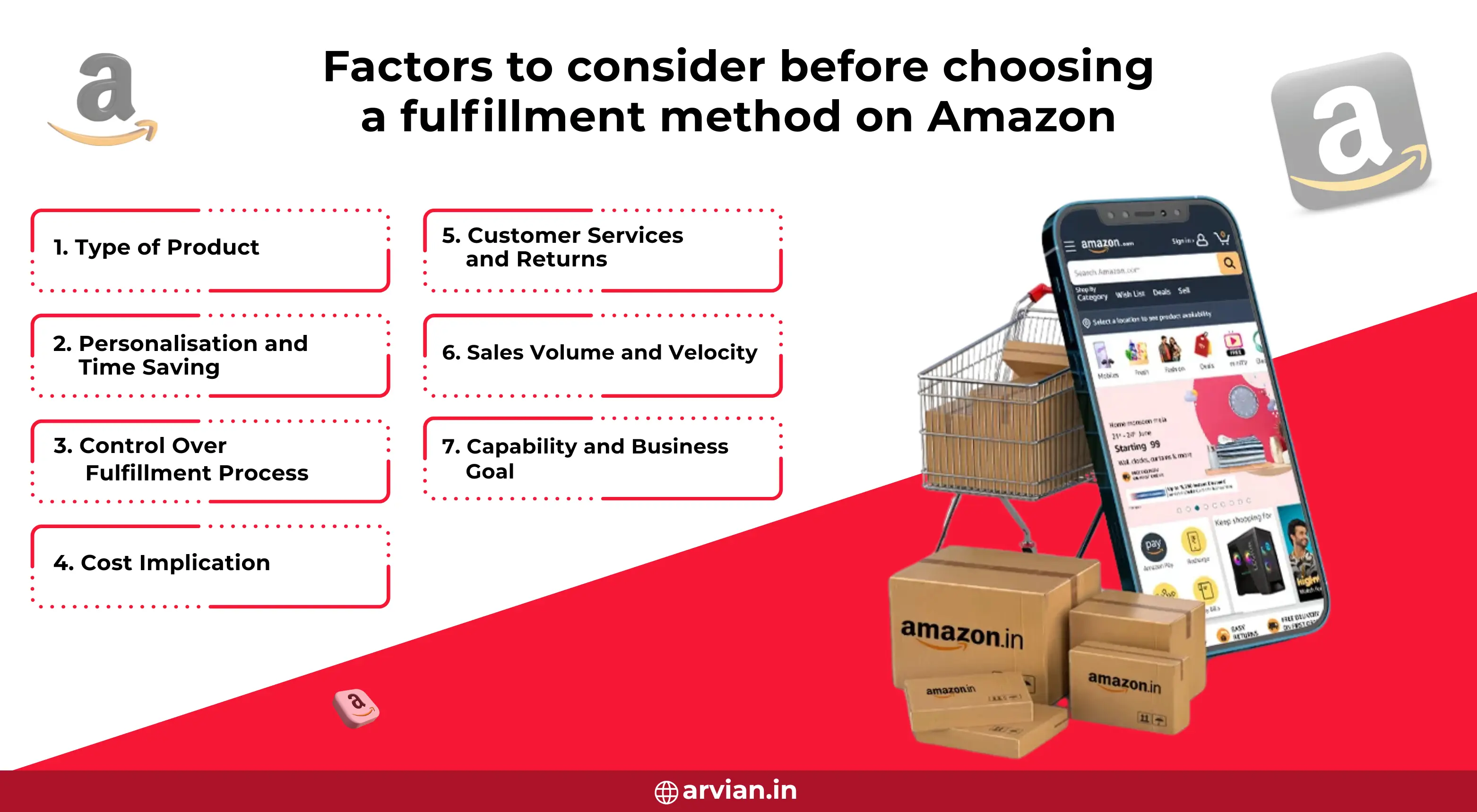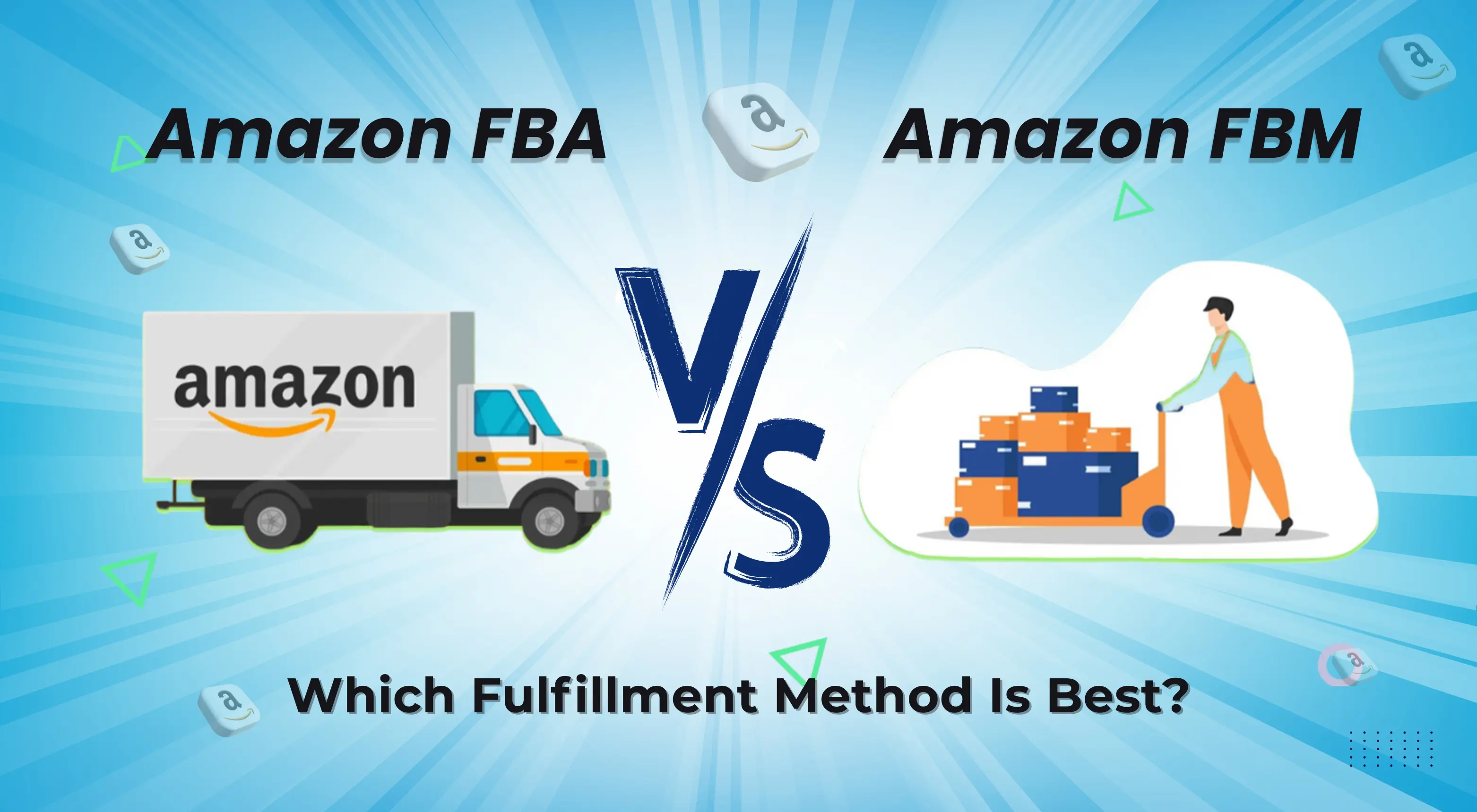E-commerce is expanding day by day, whether it's Amazon, Flipkart, or many more. When it comes to the Amazon seller, they face an important decision to make between Fulfillment by Amazon(FBA) and Fulfillment by Merchant(FBM). They are two different models that provide their own advantages and challenges.
If we talk about the percentage on the Amazon platform, there are about 82% Amazon FBA users and 34% use Amazon FBM.
- FBA only: 64%
- FBA & FBM: 14%
- FBM only: 22%
If you are confused about which to opt for. Today, we will help you find out with FBA vs FBM. However, you can also consult with the Amazon account management services provider company.
What is Amazon FBA and Amazon FBM?
- Fulfilment by Amazon(FBA): It is a fulfilment method on Amazon in which sellers send their products to the Amazon fulfilment centres. Amazon has a lot of fulfillment centres across India.
Amazon stores the inventory of the seller. In addition, they handle storage, packing, shipping, customer service, and returns. Sellers just have to send their inventory to the Amazon fulfillment centre as per the requirement, and the rest will be taken care of by Amazon. - Fulfillment by Merchants(FBM): It is a fulfillment method on Amazon in which sellers list their product on Amazon by themselves and manage all the work, like processing orders, shipping products as well and handling customer service.
This can be done independently or through third-party logistics providers. You have to maintain your own inventory and ship products directly to the customer through the Amazon platform.
Difference between FBA vs FBM
| Feature | FBA | FBM |
|---|---|---|
| Who Handles Fulfilment | Amazon stores, packs, and ships products | Seller (or third-party logistics) manages storage, packing, and shipping |
| Prime Eligibility | Automatic Prime badge; higher Buy Box chances | Not Prime-eligible unless enrolled in Seller Fulfilled Prime (SFP) |
| Customer Service & Returns | Amazon manages customer service and returns | The seller is responsible for customer service and returns |
| Fees | Fulfilment, storage, returns, and other Amazon fees | Lower Amazon fees, but the seller pays for shipping, packaging, and storage |
| Inventory Control | Amazon controls inventory in its warehouses | The seller has full control over inventory and stock locations |
| Shipping Speed | Fast, Prime 1-2 day shipping | Varies based on the seller’s chosen carrier and service level |
| Branding/Packaging | Standard Amazon packaging, limited customisation | The seller can use branded packaging and marketing inserts |
| Scalability | Easier to scale; Amazon handles logistics | Scaling requires more resources and infrastructure from the seller |
| Best For | Small, fast-moving, standardised products; sellers wanting hands-off fulfilment | Large, heavy, custom, or slow-moving products; sellers with logistics expertise |
| SEO & Buy Box Advantage | Slight boost in search ranking and higher Buy Box win rate | Less SEO/Buy Box advantage unless using SFP |
| Profit Margins | Slightly lower due to higher fees | Often higher margins if the seller’s logistics are efficient |
| Startup Speed | Takes longer to set up due to Amazon's requirements | Faster to launch; seller controls the process |
Factors to consider before choosing a fulfillment method on Amazon

Let’s compare some of the top factors that you should consider when choosing your fulfilment method on Amazon-
1. Type of Product:
The selection of fulfilment is closely linked to the type of product that you want to sell. If you have a smaller product that requires minimal storage and packaging, then it is easier to fulfil directly. But for the large product, it is more difficult and opting for FBA is a great choice.
- FBA: Ideal for small, lightweight and fast-moving items
- FBM: Ideal for large, heavy and fragile items
2. Personalisation and Time Saving:
If you have enough time to take care of your day-to-day order fulfilment or you want to add a personal touch to your order, then opting for fulfilment by merchant is ideal for you.
- FBA: Ideal if you have time for a day operation and want to add a personal touch.
- FBA: Ideal if you do not have much time or energy for picking, packing, and shipping.
3. Control Over Fulfillment Process:
If you want full control over your fulfilment process from storage, packaging, or shipping, then opting for FBM is good. If you cannot handle the entire fulfillment process, then opting for FBA is good.
- FBA: Amazon controls over fulfilment process completely.
- FBM: The Merchant has complete control over the fulfilment process.
4. Cost Implication:
Analyzing the cost structure associated with the type of fulfillment method is very important. Opting for FBA is linked with a lot of fees like storage, fulfilment, and many more, but these fees add to the efficiency and capability for you.
- FBA: Involve various fees like storage, fulfilment, etc.
- FBM: Manage your own storage and shipping, which potentially has lower cost.
5. Customer Services and Returns:
How you handle customer inquiries is also important. Customer service involves answering questions and helping buyers with the returns and refund process. Some sellers stick to the Fulfilment by Merchant and interact with customers personally.
- FBA: Take care of customer service and returns on your behalf professionally.
- FBM: Seller interacts with customers personally in a formal way.
6. Sales Volume and Velocity:
Sale volume refers to the sale amount within a given time period, whereas sale velocity is the measurement of how quickly product sales occur and how it is affecting the sale volume. If you talk about a large volume of product on a regular basis, then opting for FBA is good. Whereas if you have a large order on an occasional basis, then you can ship and store directly
- FBA: Suitable for large volume orders on a daily basis.
- FBM: Suitable for large orders on an occasional basis.
7. Capability and Business Goal:
Align your fulfilment method with your business objective and growth plan. If you want to scale quickly without investing much in logistics, then opting for FBA is a good idea.
- FBA: Suitable for businesses that have high-volume sales.
- FBM: Perfect for niche market, customise product
Amazon's FBA & FBM Pros and Cons
FBA Pros:
- Prime Badge: Access to Amazon Prime customers, increasing visibility and trust.
- Logistics handle: Amazon manages storage, shipping and customer service.
- Scalability: It is easy to handle large versions without additional infrastructure.
FBA Cons:
- Fee: High storage and supply fees, which increased in 2025.
- Low control: limited ability to manage customer service and returns.
- Inventory ban: Amazon can impose storage limitations, affecting stock availability.
FBM Pros:
- Cost control: potentially low supply costs, especially for oversized or slow-moving items.
- Full control: Manage customer service, shipping, and returns according to your policies.
- Branding: The opportunity to adapt packaging and increase brand experience.
FBM Cons:
- No automatic Prime access: To get prime benefits, qualification should be obtained for SFP.
- Logistics Responsibility: Storage, shipping, and customer service need to invest in infrastructure.
- Buy box challenges: Low are the chances of winning the purchase box without Prime eligibility.
Frequently Asked Questions
Does FBA automatically make my products qualified for Prime?
Yes, with FBA, your products automatically receive Prime badges, giving you access to Amazon's fast-showing customers and increasing the chances of winning the buying box.
Can FBM sellers also get Prime badges?
Yes, but only through the Seller Fulfilled Prime (SFP)—a program with strict distribution and performance criteria through the seller. This requires a 1- to 2-day delivery capacity and excellent customer service.
Can I use both FBA and FBM at the same time?
Yes. Many sellers adopt a hybrid model, using FBA for high-demand or small products and FBM for oversized, seasonal, or low-margin items. It gives flexibility and cost balance.
What are the risks of using FBA?
FBA can be expensive with long-term storage fees or additional inventory. You also have branding options and should follow Amazon's strict inventory and compliance rules.
Is FBM harder than FBM?
FBM requires more effort, especially with shipping, customer service, and returns. But it gives you complete control over customer experience, and it can be better if you already run your own logistics.


.png)


